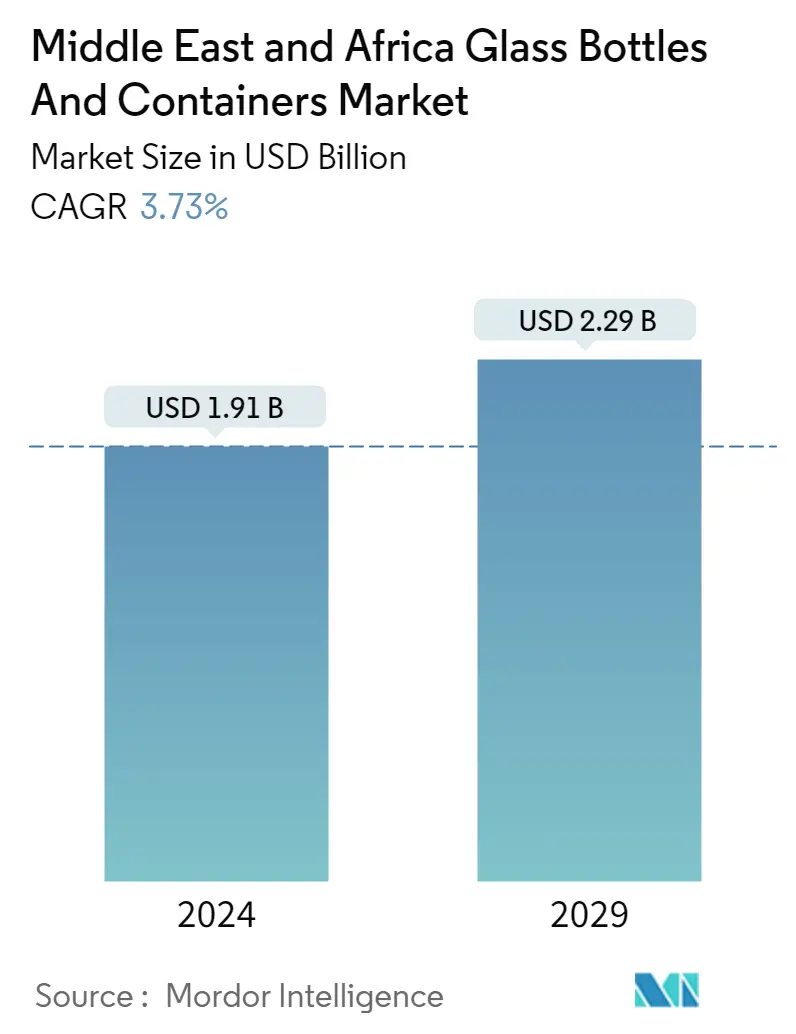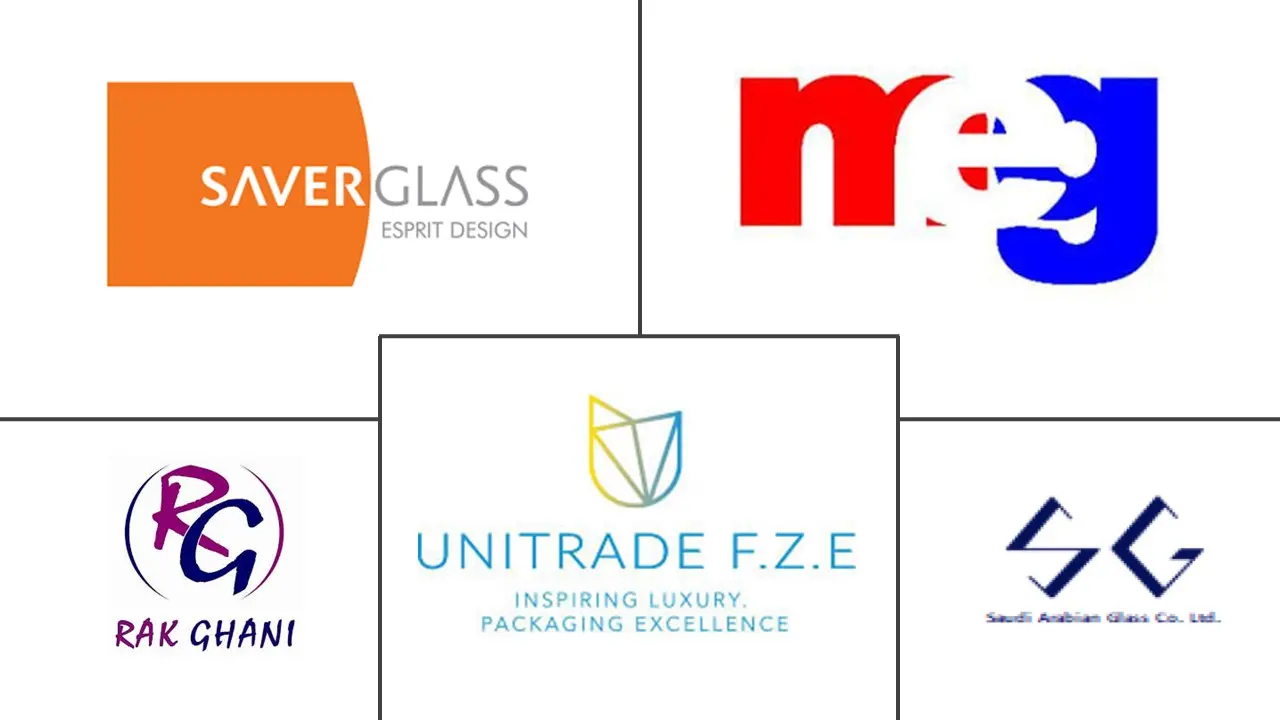Market Size of Middle East & Africa Glass Bottles And Containers Industry

| Study Period | 2019 - 2029 |
| Base Year For Estimation | 2023 |
| Market Size (2024) | USD 1.91 Billion |
| Market Size (2029) | USD 2.29 Billion |
| CAGR (2024 - 2029) | 3.73 % |
| Market Concentration | Low |
Major Players
*Disclaimer: Major Players sorted in no particular order |
Need a report that reflects how COVID-19 has impacted this market and its growth?
Middle East and Africa Glass Bottles and Containers Market Analysis
The Middle East & Africa Glass Bottles And Containers Market size is estimated at USD 1.91 billion in 2024, and is expected to reach USD 2.29 billion by 2029, growing at a CAGR of 3.73% during the forecast period (2024-2029).
- The demand for glass bottles is rising across the African region due to the rising consumption of alcoholic beverages. Glass bottles are commonly used for packaging alcoholic beverages, including beer. One of the key factors fueling market expansion is the rise in beer consumption around the region. According to Statistics South Africa, the Consumer Price Index (CPI) in South Africa increased from 91.30 points in May 2019 to 104.4 points in May 2022.
- Increasing personal disposable income drives sales in different end-user industries, such as beverages, food, cosmetics, and pharmaceuticals. According to the SARB Personal Finance June 2021 edition, personal disposable income increased by 2.3% year-over-year. Over the past few years, the region has witnessed a growing focus on the glass bottles and containers market by setting up new plants.
- Companies operating in the region are more focused on sustainable packaging and are investing in the same. For instance, in the past two years, Ardagh Glass Packaging Africa (AGP - Africa) has invested twice to ramp up the facility's capacity of glass packaging in Nigel to meet the growing demand in Africa.
- Alcoholic drinks are the prominent end-user category of premium glass packaging due to glass's inherent characteristics, such as its barrier, premium look, chemical inertness, and easy recyclability. Regional players are launching premium products in evolved packaging to meet increased disposable income and urbanization demand. In August 2021, Castle Lager announced South Africa's first double malt lager with the introduction of Castle Double Malt. The premium double malt premium beer is launched in a 410ml pearl, green, and gold can and a premium 340 ml green bottle.
- Despite significant risks, investment in emerging markets is expected to boost profits. The top emerging economies are those of the BRICS (Brazil, Russia, India, China, and South Africa) countries. The classification of lower-tier economies may be done in a few different ways. Also, in November 2022, Saudi Pharmaceutical Industries & Medical Appliances Corporation (Spimaco), a market participant in the Kingdom's pharmaceutical industries sector, invested SAR 272 million (USD 73 million) in developing the new facility in the Qassim area. The new 2,800 square meter facility, which manufactures numerous risky pharmaceuticals, was established with AstraZeneca, a well-known international pharmaceutical business. Thanks to the investment, different glass packaging businesses in the nation would have prospects.
- However, traditionally, aluminum and glass are preferred materials across pharmaceutical packaging. Over time, these materials got expensive (due to raw material prices and other factors) and could not provide economically viable solutions for packaging products across mass consumption. That marked the advent of plastics as an option.
- The impact of COVID-19 on glass bottle manufacturing was depicted as an indirect linkage towards an important business that has been allowed to function. The Ethiopian glass container manufacturer, Addis Ababa Glass, and Bottle Share Company overlooks the capacity expansions. Additionally, amidst COVID-19, the South African area sought stringent measures, such as halting all alcohol production in the country and the concerned authorities to counter the spread of COVID-19. Besides, Fitch, a credit rating agency, estimated that the Coronavirus outbreak would negatively impact the short-term growth across sub-Saharan African areas, particularly in Ghana, Angola, Congo, Equatorial Guinea, Zambia, South Africa, Gabon, and Nigeria. This is due to such countries having close export relations with China.
